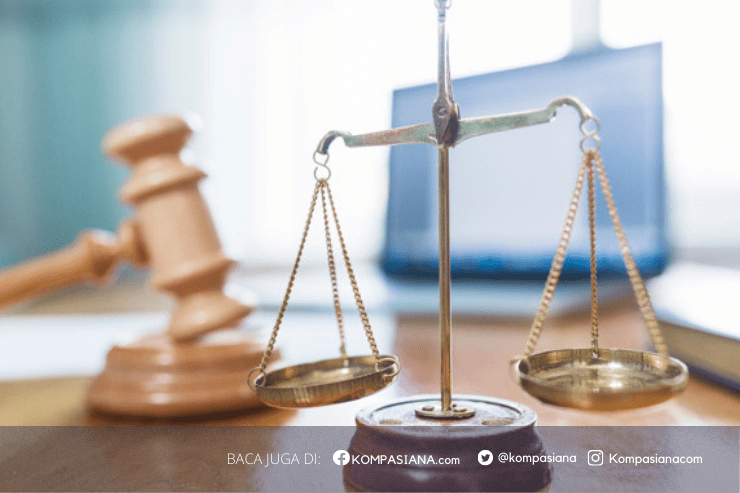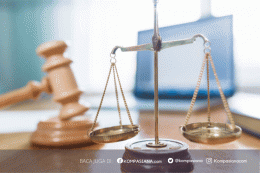Hai, Saya Luka Matic, Mahasiswa D4 Perhotelan 2020 Sekolah Tinggi Pariwisata Trisakti. Saya merupakan Penerima Beasiswa Prestasi 100% Sekolah Tinggi Pariwisata Trisakti. Saya harap dapat membagikan sesuatu yang bermanfaat. Terima kasih.
In the previous article I have written about introduction of the Totalitarian Orders and Constitutional Rights and Freedoms. In this second part, I ll be writing about examples of these totalitarian regimes and their rights. The following examples of Soviet Union, Third Reich and Democratic Kampuchea, clearly indicate these views.
Constitution of the Soviet Union of 1936 (the so-called Stalin's Constitution)
The Constitution of the Soviet Union from 1936 introduced significant innovations into the existing constitutional and legal order of the Soviet Union, exhaustively stating numerous rights and freedoms of citizens.
This constitution explicitly guarantees the right to work, the right to rest and free time, provides for a system of protection and assistance in the event of old age, illness and loss of ability to work, defines a system of social insurance and financing from the state budget and free medical care.
Free education, full equality of men and women, equality of all citizens regardless of nationality and race, separation of church and state and state from school, freedom of religion, freedom of anti-religious propaganda, freedom of speech, press, assembly (including holding mass rallies) ), organization of street processions and demonstrations, freedom of association of citizens within various public organizations, and especially the inviolability of the person, home and privacy of correspondence has been determined and guaranteed.
The eleventh chapter of the constitution is dedicated to the regulation of the electoral system, and the novelty brought by that section referred to the introduction of universal suffrage, which thus became the constitutionally guaranteed right of citizens.
A summary analysis of Stalin's constitution in the field of human rights regulation indicates that it is a democratic constitution, which is highly harmonized with modern civilization in the field of understanding the position of the individual and his civil and personal status. This analysis would also indicate a progressive shift in the constitutional regulation of human rights compared to the previous constitution of 1924, as well as the legislator's desire to base the state and social order on respect for freedom, equality, diversity and non-discrimination.
However, the practical application of the provisions on personal and civil rights indicates that there are numerous contradictions and inconsistencies. Stalin's constitution was adopted during the most repressive regime in the history of the Soviet Union. It was in 1936 that the epoch of the most active terror within the Soviet state (the so-called "Great Purge") began, the goal of which was to eliminate political and ideological dissidents. The consequence of such an extremely repressive and totalitarian regime is about 14 million people who stayed in labor camps, between 4 and 5 million people who lost their lives during that period and between 6 and 7 million people who were forcibly deported to remote parts of the USSR.
The theoretical justification and practical expediency of this constitution is quite clear. One of the main reasons for the adoption of such a constitution is the desire of the leadership to offer citizens a formal proclamation of a highly advanced social order. On the other hand, its application indicates that it is an instrument of creating the illusion of a "perfect" system that swears the true meaning of the state and the supreme leader, ie an instrument that restricts and abolishes the freedoms and rights of citizens.
Third Reich -- Weimar Constitution and act of 1933.
German Constitution of 1919 - the so-called. Weimar Constitution - was characterized by progressive, liberal-democratic content and during the time in which it was adopted was extremely progressive. The entire second part of the constitution determined the basic rights and obligations of citizens. This constitution provides for the equality of all Germans before the law, equal status for men and women, national minorities are allowed to use their mother tongue in education, administration, justice, and guarantees the inviolability of the rights of individuals, their homes, correspondence , telephone conversations, and the right to free opinion. In addition, special protection of the institution of marriage has been established, the status of married and illegitimate children has been equalized, the right to gather and organize,
With the coming to power of the Nazi party and the establishment of the Third Reich, the Weimar Constitution did not cease to be valid. It was formally valid during the entire period of Nazi Germany's existence until the collapse in 1945. The contrast between the Weimar Constitution and the ideology of the new Nazi regime was enormous and almost completely incomprehensible. In order to overcome these contradictions, the state leadership passed an Act in 1933 which introduced the dictatorial regime of Adolf Hitler, which ended the period of the Weimar Republic.
That Act of 1933 formally and de facto had the force of a constitutional amendment and enabled the government of the Reich to avoid the application of formal legal procedures. In that way, the Weimar Constitution, although formally in force, then lost all real significance, becoming only a mere proclamation. In addition, as a basis for deviating from the prescribed progressive constitutional principles and clearly defined and established rights of individuals and citizens, the interpretation of 48 of the Weimar Constitution itself was widely set and abused, which provided for the possibility of suspension of constitutionally Guaranteed personal and civil rights.
In that way, it is possible to endanger the inviolability of personal rights, the right to residence, the privacy of correspondence, the expression of opinion, freedom of assembly, the establishment of organizations and the inviolability of property. the interpretation of 48 of the Weimar Constitution itself was widely set and abused, which provided for the possibility of suspension of constitutionally guaranteed personal and civil rights.
In that way, it is possible to endanger the inviolability of personal rights, the right to residence, the privacy of correspondence, the expression of opinion, freedom of assembly, the establishment of organizations and the inviolability of property. the interpretation of 48 of the Weimar Constitution itself was widely set and abused, which provided for the possibility of suspension of constitutionally guaranteed personal and civil rights. In that way, it is possible to endanger the inviolability of personal rights, the right to residence, the privacy of correspondence, the expression of opinion, freedom of assembly, the establishment of organizations and the inviolability of property.
The repression of the Third Reich regime is well known.
In this example, too, the theoretical justification of this constitution is quite clear. The leadership of Nazi Germany sought to legitimize and organize its regime in accordance with legally recognized principles. However, the practical application of the 1933 Act (based on the interpretation of 48 of the Weimar Constitution) which created a legal basis for the use of radical methods in restricting constitutionally established rights and freedoms caused human rights violations of unprecedented proportions and the deaths of millions.
Democratic Kampuchea
The Constitution of Democratic Kampuchea was adopted in 1976, just one year after the Khmer Rouge came to power. That Constitution was adopted without significant imitation of the examples of other states. The text of the Constitution consists of 16 chapters and 21 articles. Individual rights and duties of the individual are briefly and generally defined within Chapter 9. Thus established the right of every resident of Cambodia to continuously improve their material, spiritual and cultural life, the right to life of Cambodian citizens is guaranteed, workers are masters of their factories and peasants of their fields, the possibility of unemployment in the state was rejected, full equality of the Cambodian peoples was established, full equality of men and women was envisaged, and polygamy was forbidden.
The overlooked rights of citizens are determined very generally and to an insufficient extent. In that way, even the few regulated rights remained mere formulations without real content. The Constitution does not provide for a whole range of rights, which are a common subject of constitutional regulation (freedom of personal belief and expression, guarantees of individual security, inviolability of the home, privacy of correspondence, protection of freedom of the press, the right to assemble and form associations). directly or indirectly leave room for the radical methods of the totalitarian regime, for example, Article 10 stipulates that dangerous activities that threaten the people's state must be strongly condemned, or Article 20, which establishes an absolute ban on all reactionary religions harmful to Democratic Kampuchea and its people.
The lack of the usual formulation and determination of freedoms and rights of individuals and citizens has left room for various - constitutionally permitted forms and methods of violation and endangerment and the small number of constitutionally established rights. Certain provisions of this constitution provided for the possibility of using repressive means in an unusually direct way in order to protect Democratic Kampuchea and its people. Such provisions have their special weight and significance if we keep in mind the fact of the existence of a relatively small number of members who regulate the basis of rights and freedoms. In that sense, the constitution was a proclamation of the basic goals of the state and the methods by which those goals will be achieved.
The period from 1975 to 1979 is the period of one of the most ultra-radical and totalitarian regimes whose extremism has surpassed all contemporary political orders. The repressive regime, unprecedented in recent history in terms of consequences, has caused enormous casualties. 25% of the total population (between 1.7 and 2.5 million people) were killed or died as a result of disease and starvation during the Khmer Rouge. During the Pol Pot regime, urban settlements were practically deserted, private property was eliminated, the use of money was stopped, the market was abolished, and religion was abolished.
Baca konten-konten menarik Kompasiana langsung dari smartphone kamu. Follow channel WhatsApp Kompasiana sekarang di sini: https://whatsapp.com/channel/0029VaYjYaL4Spk7WflFYJ2H







